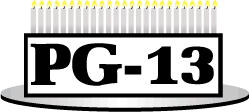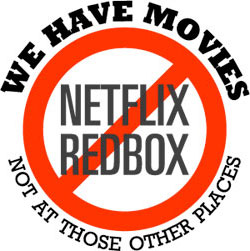PG-13 is now 25 years old: A look back
Posted Monday, July 6, 2009 at 2:27 PM Central
by Tim Briscoe

On July 1, 1984, MPAA president Jack Valenti introduced the PG-13 rating. It was the first addition to the movie ratings system which bowed in 1968. Let's look back at the reasons why it was added and what has changed in the 25 years since.
PG-13 was established to mark those films in the increasing area between family-oriented PG and more mature R. Below are a few films from the early '80s which helped prompt PG-13's creation along with the questionable PG content.
- Dragonslayer (1981) - strong fantasy violence including monsters eating a corpse; brief nudity
- Tootsie (1982) - sexual language and a couple of f bombs
- Poltergeist (1982) - strong horror plus pot-smoking by parents
- The Right Stuff (1983) - nudity and suggestive language including several mentions of the f word
- Terms of Endearment (1983) - more f bombs and pot smoking
- Indiana Jones and the Temple of Doom (1984) - lots of scary violence including ripping out of someone's beating heart; weird stuff like eating of monkey brains and zombie kids
- Gremlins (1984) - cuddly creatures became vicious, ultra-violent monsters
- Sixteen Candles (1984) - nudity and sexual language (the one kid is named Long Duk Dong after all)
- Footloose (1984) - adult language and some nudity (Kevin Bacon's butt!)
Steven Spielberg is the one who suggested a new rating for this middle ground. The director of Indiana Jones and a producer on Gremlins and Poltergeist had become a lightning rod for criticism from parents. He told the Associated Press in 2004, "I created the problem and I also supplied the solution... I invented the rating."
The age of 13 wasn't arbitrarily chosen as one might think. Valenti consulted with various industry groups and religious groups before settling on the grade. "The child behavioral experts will tell you that not all 13s are alike, not all 14s are alike, not all 12s are alike," he said of the decision. (This assertion has since been argued.)
The first widely distributed film with a PG-13 rating was Red Dawn. Another film, The Flamingo Kid, was the first actually given the rating by the MPAA's classification division. The Woman in Red, Dune, and Johnny Dangerously were also amongst the first to earn the rating.
Not much has changed with the ratings system in the 25 years since PG-13's introduction. The X rating was replaced by NC-17 in 1990 to throw off the negative stigma of the former label.
What has changed is the attitude toward PG-13 amongst filmmakers and studios. The PG-13 has become a favorite of studios as it suggests a "good" amount of language and violence for action movies without being offensive to most. Some moviegoers deem PG as being bland whereas R is seen as not family friendly.
The numbers follow this track. Of the number one, highest-grossing films in each of the last 16 years, 12 have been rated PG-13. Another PG-13, Transformers: Revenge of the Fallen, is already ahead of the pack this year.
Despite this trend, there has been a resurgence of R-rated comedies. Popular laughers like Tropic Thunder, Pineapple Express, Step Brothers, Knocked Up, Superbad, and this year's The Hangover have led this charge.
Meanwhile, controversy still hangs over the ratings system in general. This is mostly due to its lack of explicit rules and guidelines. This case was clearly made in the excellent 2006 documentary This Film Is Not Yet Rated.





